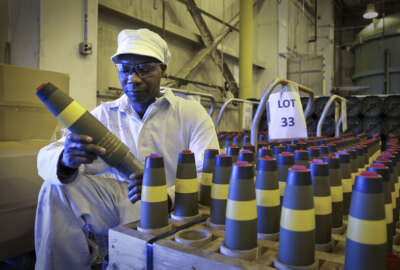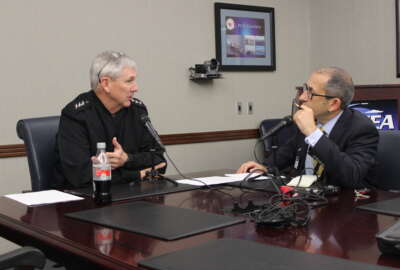
Navy historians preserve artifacts for posterity, operational info for future fights
The Navy's History and Heritage command exists to pass on lessons learned from past operations, and to keep the Navy from repeating past mistakes.

In the military, institutional memory can be a matter of life and death. That’s why the Navy has its History and Heritage Command (NHHC), whose mission is to preserve and present an accurate history of the U.S. Navy to as broad a range of Americans as possible. It exists to pass on lessons learned from past operations, and to keep the Navy from repeating past mistakes.
For example, after Vietnam, the Navy disestablished its riverine operations. But decades later, when U.S. forces entered Iraq, the Navy found it had a need to conduct these operations again on the Tigris and the Euphrates rivers.
So the NHHC revisited the lessons learned from Vietnam, and sent them to operations. Those historical records impacted naval tactics and procedures for riverine combat, and retired Rear Adm. Sam Cox, director of the Navy History and Heritage command, said on Agency in Focus: Navy that they saved lives.
The command doesn’t just preserve operational documents; it has numerous lines of effort revolving around preserving naval history and outreach to the public. In addition to the operational archive, it also runs the Navy Department library, and writes the official history of the U.S. Navy. It has a collections division that is responsible for the acquisition and care of about 500,000 artifacts, from ship’s bells to nameplates with particular historical significance. It also has an underwater archaeology division, which finds, monitors and maintains underwater naval wrecks, many sunk during wartime.
“That’s the Navy’s Arlington National Cemetery, or our Gettysburg,” Cox told the Federal Drive with Tom Temin. “Those are hallowed sites that in many cases are war graves. So we take special care in trying to make sure that those wrecks are not molested in any way.”
Occasionally, Cox said, the command works with outside groups to find and monitor these wrecks, though it discourages anyone from actually diving in them. There could be safety hazards from unexploded ordnance, or potential national security concerns. But it’s perfectly legal to observe these wrecks, and employing responsible divers is the easiest way for the command to keep track of all of them.
Museums, Art
The command also operates 10 museums across the country, most of them fairly small, though Cox said the National Naval Aviation Museum in Pensacola, Florida is the third largest aviation museum in the country. These museums also tend to be specific to the area. For example, there’s a submarine museum in New London, Connecticut, the primary sub base on the east coast. That’s also where the Nautilus, the now-decommissioned first nuclear submarine, resides. The NHHC maintains it and keeps it open to the public.
The command also preserves naval combat art, the only way to visually represent naval battles before the invention of photography, and film, which first came into use during World War I. The main obstacle to the preservation of these mediums, Cox said, is mold. Everything is infested with mold, but with strict climate controls, it’s possible to keep that mold from blooming. That’s why as the Navy prepares a new facility for the command, the biggest investment is establishing museum-quality environmental controls.
The command also preserves the personal documents of many sailors, like diaries with firsthand accounts of significant events. Sometimes those kinds of documents can give a different perspective, one that might not be sufficiently high-level enough to make it into official documentation, but are nonetheless interesting or illuminating. They can also help provide examples of good leadership, and inspire the American public, and by extension, Congress.
“It’s very important that, as the Navy History and Heritage command, we connect with senior naval leadership, the sailors in the fleet, and the American public,” Cox said.
Copyright © 2025 Federal News Network. All rights reserved. This website is not intended for users located within the European Economic Area.
Daisy Thornton is Federal News Network’s digital managing editor. In addition to her editing responsibilities, she covers federal management, workforce and technology issues. She is also the commentary editor; email her your letters to the editor and pitches for contributed bylines.
Follow @dthorntonWFED
Related Stories





